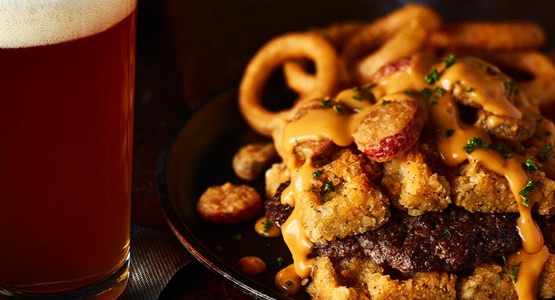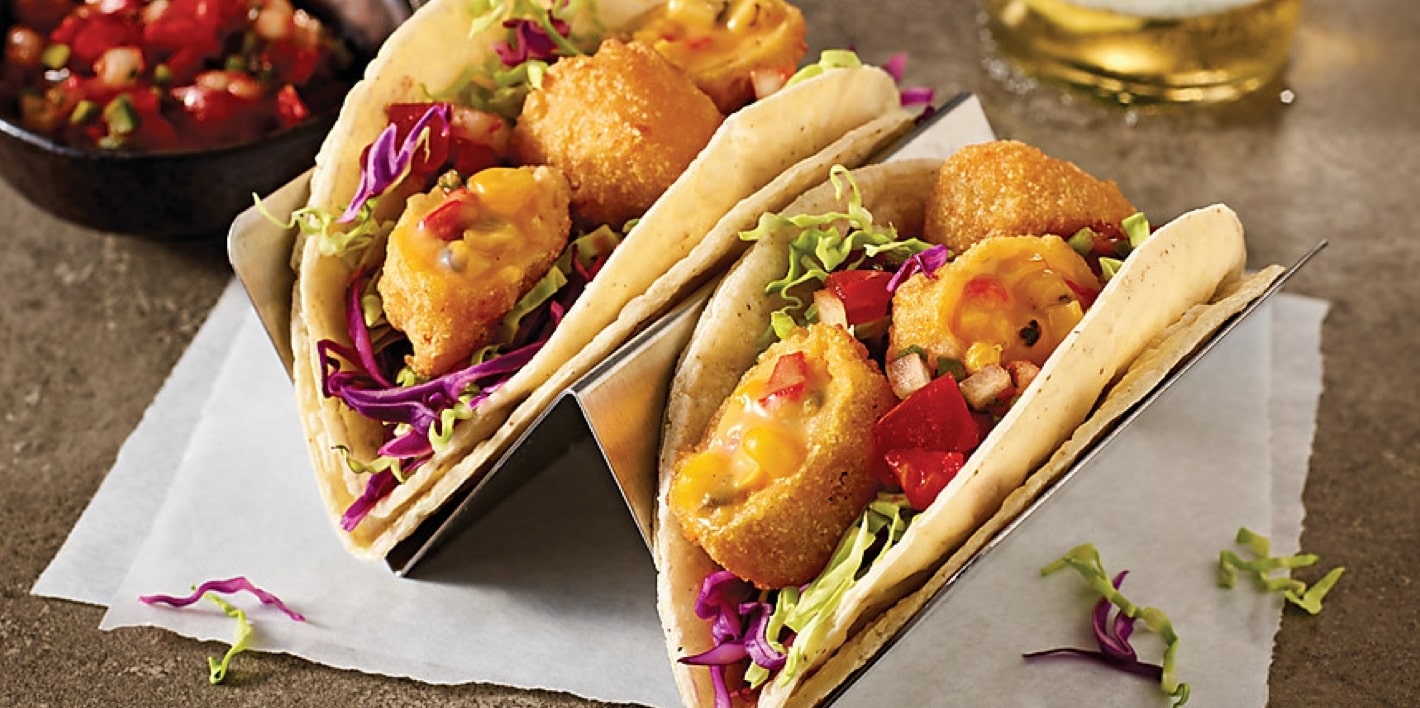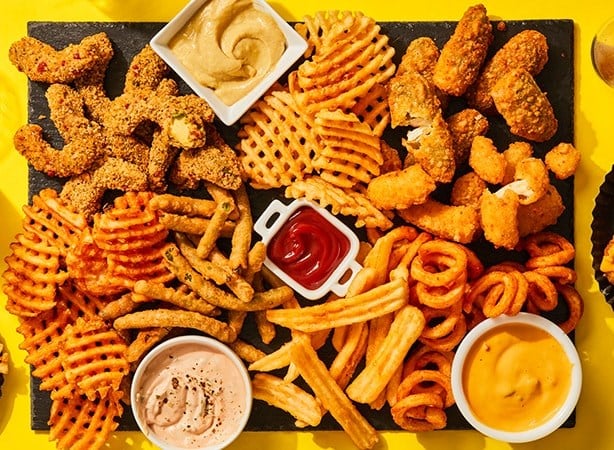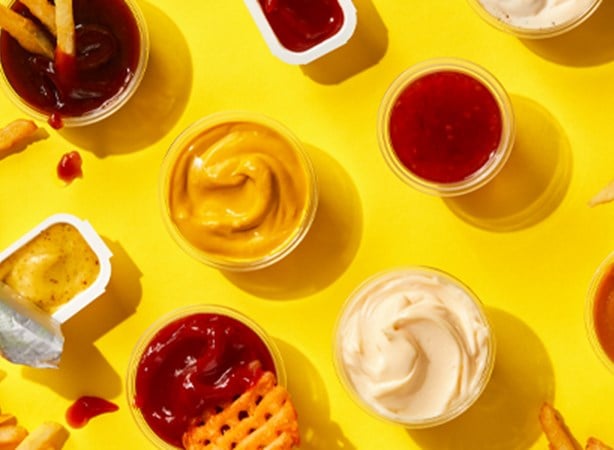
Now that ethnic foods and flavors have become mainstream, and culinary companies like McCain® Foods are delivering new menu items with an ethnic twist, diners are enjoying them more often — particularly when accompanied by a complementary alcoholic beverage like craft beer.
According to research from Nielsen, one out of three Americans consumes foods that contain multicultural flavors at least once a week.
Additionally, according to Nielsen’s CGA On-Premise Consumer Survey, twice as many Americans dine out every week and order a drink (67%), compared to those visits that are drink-led (34%).
Partnering beers with ethnic food
Offering craft beer as a companion to ethnic foods and ingredients presents a major opportunity for restaurant operators to increase visits and grow sales.
“There’s a synergy with beer and food,” says Julia Herz, craft beer program director at the Brewers Association, a non-profit trade group.
Whether it’s tacos and Tecate or sushi and Sapporo, ethnic foods have historically been enjoyed with beverages from the same geographic region, so it makes sense for operators to start with such symbiotic pairings.
“Food and drink are meant to be enjoyed together,” says Phil Stubstad, a manager and brew consultant with Chicago-based Lettuce Entertain You Restaurants (LEYE). “Beers [from the same region] are always a good place to start.”
Among the alcoholic beverage offerings at Big Bowl, LEYE’s Chinese and Thai concept, are bottles of traditional Asian beers, including Sapporo and Tsingtao, and other well-known global brews, such as Beck’s, Heineken and Corona.
Advanced cultural pairings
Yet to really tap into the trend and grow sales, experts say operators must offer both traditional pairings — matching ethnic foods with beers from the same regions — and also more advanced combinations.
“Pairing ethnic foods with beers from the region is a great cultural pairing,” says Jeff Tyler, head brewer at Spice Trade Brewing, a stand-alone brewery operating out of The Yak and Yeti Restaurant and Brewpub in Arvada, Colo.


“You are, in essence, transporting someone to a different region of the world by providing both the food and drink from that area,” says Tyler. “It’s a great way to get a snapshot of flavors that a certain region of the world has.”
“You run out of pairing options pretty quickly,” he says.
Exploring flavor profiles
Instead, Tyler develops recipes and pairings based on flavor profiles. “It allows a much wider exploration of a region’s food culture,” he says. For example, his latest concoction is a Sichuan Saison, made with Sichuan peppercorns, orange peel and a custom blend of Chinese five-spice.
Meanwhile, Lettuce Entertain You’s Stubstad advises operators to offer options for all.
“It’s important to do a little bit of both,” he said. “Not everyone wants the same thing. You want some variety.”
At Big Bowl, the beer menu takes advantage of this to focus on local brews as well as a selection of locally made IPAs and original brews. An example is Stubstad’s original Lemon Grass Wit Beer, a light, wheat beer created to balance the spice in dishes like Kung Pao Chicken.
Herz of the Brewers Association also sees advantages to expanding beyond the traditional pairings.
“When you want to be a leader and flex your muscles and shape people’s tastes, you go to beers that are less [traditional],” says Herz. “It creates a lot more home runs and 'ah-has.'”
An app for that
Knowing what beers to pair with ethnic food can pose a serious challenge for restaurant operators as the practice is only recently starting to experience new growth. Moreover, there are far fewer resources than there are for, say, pairing food and wine.
Appetizers — think crispy and spicy “true beer” foods like McCain’s Brew City Jalapeño Bottle Caps — can be a good starting point for testing pairings. Here are a few guidelines for matchmaking:
- Like with like. Pull common flavors or ingredients from the appetizer and match with a beer that has similar flavors. For example, serve Japanese small bites, such as sushi or orange chicken skewers, with beers that have a citrus-y profile; or pair McCain’s IPA Beer Battered Gouda and Mozzarella Cheese Bites with an Italian IPA.
- Hop to it. Pair hoppy or other bitter-forward beers with fatty, fried or rich appetizers. Hops — a bittering, flavoring and stability agent in beer — has a way of counter-balancing fat and heat without overwhelming. Try an IPA, for example, with McCain’s Mexican-Style Anchor Poppers.
- Lighten up. Lighter, crisp beers, such as Kolsch or wheat ales, are a refreshing complement for spicy starters, such as Indian samosas.
Promoting the perfect pairing
Once you find the right pairings for your menu, you’ll need to convince guests you’ve nailed it. Here are a few tactics:
- Train servers to suggest appropriate beers based on a customer’s food order; many operators say this is the best approach to selling more beer with food.
- Other operators are finding that printing recommended suggestions on the appetizer menu helps diners make decisions about what to order in that moment, as well as to educate them, which offers a longer-term impact.
- Special beer pairing events are another approach employed by savvy operators looking to grow sales of beer and food pairings as well as to increase overall interest in the beverage category and in their establishments.
With an average profit margin of 80%, beer is, of course, a lucrative item in its own right. By pairing the right beer with your ethnic offerings — especially high-profit margin appetizers — operators can reap even more benefits.
“In general, people are more likely to have a couple beers if food is offered,” said Spice Brewing’s Tyler. “[Offering beer which pairs well with your ethnic food] can help you stand out among the competition by providing a unique experience to customers.”


